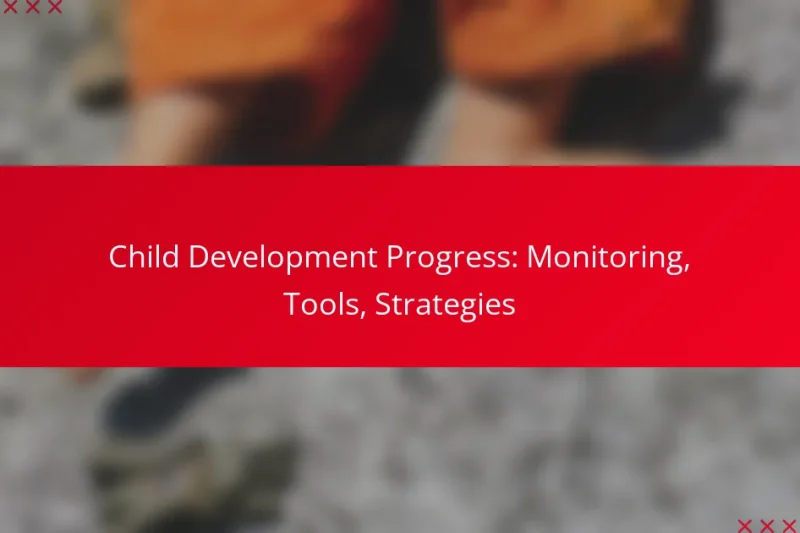Early childhood development is marked by key milestones that encompass physical, cognitive, social-emotional, language, and adaptive … Early Childhood Development: Milestones, Skills, Growth, LearningRead more
Understanding Child Development Stages
Understanding the key stages of child development is essential for parents and caregivers, as each phase is marked by unique physical, cognitive, and emotional changes. Recognizing these milestones allows for better support of children’s growth and adaptation to their needs. Additionally, factors such as socioeconomic status and cultural practices can influence the pace and nature of development, highlighting the importance of context in nurturing young minds.
Toddler Development: Signs, Health, Growth, Well-Being
Toddler development is a vital phase characterized by the growth of physical, cognitive, social, emotional, and … Toddler Development: Signs, Health, Growth, Well-BeingRead more
Physical Development: Activities, Growth, Play
Physical development in children is crucial for their overall growth and well-being, and it can be … Physical Development: Activities, Growth, PlayRead more
Emotional Development: Stages, Skills, Support
Emotional development is a critical aspect of a child’s growth, encompassing various stages that shape their … Emotional Development: Stages, Skills, SupportRead more
Developmental Delays: Types, Signs, Solutions
Developmental delays encompass a range of challenges that can impact a child’s growth in areas such … Developmental Delays: Types, Signs, SolutionsRead more
Cognitive Development: Activities, Strategies, Engagement
Cognitive development in children is crucial for their overall growth and can be significantly enhanced through … Cognitive Development: Activities, Strategies, EngagementRead more
Child Development Progress: Monitoring, Tools, Strategies
Monitoring child development is essential for ensuring that children reach their growth milestones effectively. Utilizing a … Child Development Progress: Monitoring, Tools, StrategiesRead more
What are the key stages of child development?
The key stages of child development encompass distinct phases that children go through as they grow, each characterized by unique physical, cognitive, and emotional changes. Understanding these stages helps parents and caregivers support children’s growth effectively.
Infancy (0-2 years)
Infancy is a critical period where rapid growth occurs, both physically and cognitively. During this stage, infants develop basic motor skills, such as crawling and walking, and begin to form attachments to caregivers.
Key milestones include recognizing faces, responding to their names, and beginning to communicate through cooing and babbling. Parents should provide a safe environment and engage in interactive play to foster development.
Early Childhood (2-6 years)
Early childhood is marked by significant advancements in language and social skills. Children start to express themselves verbally and engage in imaginative play, which is crucial for cognitive development.
During this stage, children learn to interact with peers, share, and understand basic rules. Encouraging playdates and group activities can enhance social skills and emotional intelligence.
Middle Childhood (6-12 years)
Middle childhood is characterized by the development of logical thinking and problem-solving abilities. Children become more independent and start to understand complex concepts in subjects like math and science.
This stage also involves the formation of friendships and a deeper understanding of social dynamics. Parents should support academic learning while encouraging extracurricular activities to promote well-rounded development.
Adolescence (12-18 years)
Adolescence is a transformative stage where individuals experience significant physical, emotional, and social changes. Teenagers develop a stronger sense of identity and begin to explore their independence.
During this period, peer influence becomes prominent, and emotional challenges may arise. Open communication and guidance from parents can help adolescents navigate these changes effectively while fostering resilience and self-esteem.
How does child development vary by region?
Child development can differ significantly by region due to factors such as socioeconomic status, access to education, and cultural practices. Urban areas often provide more resources and opportunities, while rural areas may face challenges related to accessibility and infrastructure.
Child development in urban areas
In urban environments, children typically have greater access to educational facilities, healthcare, and extracurricular activities. This access can lead to enhanced cognitive and social development, as children engage with diverse peers and participate in various programs.
However, urban living can also introduce stressors such as noise, pollution, and overcrowding, which may impact a child’s emotional well-being. Parents should be mindful of balancing exposure to stimulating environments with the need for safe, quiet spaces for relaxation and play.
Child development in rural areas
Rural areas often present unique challenges for child development, including limited access to quality education and healthcare services. Children may have fewer opportunities for social interaction and extracurricular activities, which can affect their social skills and overall development.
On the positive side, rural settings may offer a closer connection to nature and community, fostering creativity and independence. Parents can support their children’s development by seeking out local resources, such as community centers or outdoor programs, to enhance learning and socialization opportunities.
What are the milestones in each development stage?
Child development stages are marked by key milestones that indicate a child’s growth in various areas. These milestones can be categorized into physical, cognitive, and emotional aspects, each reflecting significant progress as children mature.
Physical milestones
Physical milestones refer to the development of motor skills and physical abilities. Infants typically begin to roll over and sit up by six months, while toddlers may start walking between 12 to 18 months. By age three, children often can run, jump, and climb with increasing confidence.
To support physical development, encourage active play and provide safe spaces for movement. Regular check-ups with a pediatrician can help track growth and identify any concerns early.
Cognitive milestones
Cognitive milestones involve the development of thinking, learning, and problem-solving skills. By the age of two, children usually can follow simple instructions and identify common objects. By age four, many can engage in imaginative play and understand basic concepts like numbers and colors.
Parents can foster cognitive growth by reading to their children, engaging in educational games, and encouraging curiosity. Providing a variety of learning materials can enhance their understanding and retention of new information.
Emotional milestones
Emotional milestones encompass the development of self-awareness, empathy, and social skills. Infants start to express emotions like joy and anger, while toddlers often begin to show attachment to caregivers. By age three, children typically can express a range of emotions and start to understand the feelings of others.
To nurture emotional development, create a supportive environment where children feel safe to express their feelings. Encourage social interactions with peers to help them learn sharing, cooperation, and conflict resolution skills.
How can parents support child development?
Parents can support child development by actively engaging with their children through various activities that promote learning and growth. This involvement can significantly enhance a child’s cognitive, emotional, and social skills.
Engaging in play
Play is a fundamental aspect of child development, providing opportunities for creativity, problem-solving, and social interaction. Parents should encourage both structured and unstructured playtime, allowing children to explore their interests and develop new skills.
Consider incorporating a mix of physical activities, such as outdoor games, and imaginative play, like role-playing or building with blocks. Aim for at least an hour of active play each day to foster physical health and emotional well-being.
Providing educational resources
Access to educational resources is crucial for supporting a child’s learning journey. Parents can provide books, educational toys, and access to technology that promotes interactive learning.
Visit local libraries or bookstores to find age-appropriate materials that spark curiosity. Online platforms often offer free or low-cost educational games and videos that can supplement traditional learning methods.
Encouraging social interactions
Social interactions are essential for developing communication skills and emotional intelligence. Parents should facilitate opportunities for their children to interact with peers through playdates, group activities, or community events.
Encouraging participation in team sports or clubs can also help children learn teamwork and leadership skills. Aim for regular social interactions to help children build confidence and learn to navigate relationships effectively.
What are the signs of developmental delays?
Signs of developmental delays can manifest in various ways, indicating that a child may not be meeting typical milestones for their age. Parents and caregivers should be attentive to these signs, as early intervention can significantly improve outcomes.
Delayed speech development
Delayed speech development is characterized by a child not speaking as much or as clearly as their peers. For instance, while most children start using simple words by around 12 months, those with delays may not begin until 18 months or later.
Common signs include limited vocabulary, difficulty forming sentences, or trouble following simple instructions. If a child is not using words or gestures to communicate by age two, it may be time to consult a speech-language pathologist.
Social interaction difficulties
Social interaction difficulties can manifest as challenges in making eye contact, responding to social cues, or engaging in play with others. Children may seem withdrawn or uninterested in interacting with peers, which can be concerning.
For example, a child who does not engage in turn-taking games or struggles to share toys may be exhibiting signs of social delays. Observing these behaviors consistently, especially by age three, warrants further evaluation.
Motor skill challenges
Motor skill challenges refer to difficulties in both fine and gross motor skills, which can affect a child’s ability to perform everyday tasks. For instance, a child may struggle with activities like holding a crayon, climbing stairs, or catching a ball.
Parents should look for signs such as an inability to grasp small objects by 15 months or difficulty running by age two. If these skills are not developing as expected, consulting with a pediatrician or occupational therapist can provide guidance and support.
What role do healthcare professionals play in child development?
Healthcare professionals play a crucial role in child development by monitoring growth, providing vaccinations, and offering guidance on developmental milestones. They assess physical, emotional, and social health, ensuring children are on track and addressing any concerns early.
Monitoring Developmental Milestones
Healthcare professionals track developmental milestones to ensure children are progressing appropriately in areas such as motor skills, language, and social interaction. Regular check-ups typically occur at key ages, such as 2, 4, 6, 12, and 18 months, as well as at 2 and 3 years. These visits allow for early detection of potential delays.
Providing Vaccinations
Vaccinations are a critical aspect of child health, protecting against various diseases that can impact development. Healthcare providers follow established immunization schedules, which vary by country but generally recommend vaccinations starting from infancy through early childhood. Parents should ensure their children receive these vaccines on time to promote healthy development.
Offering Guidance and Support
Healthcare professionals offer valuable guidance to parents on nutrition, behavior, and developmental activities that support growth. They can provide resources and referrals for early intervention services if developmental issues are identified. Parents are encouraged to communicate openly with healthcare providers about any concerns regarding their child’s development.






